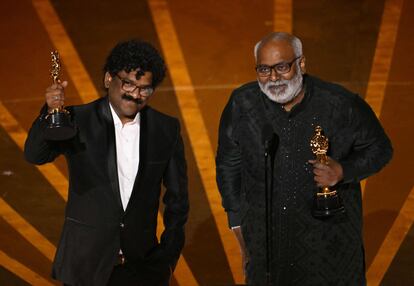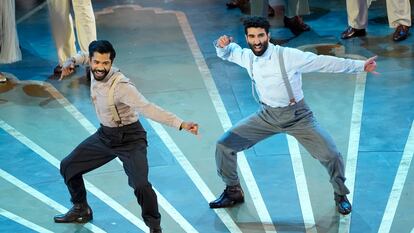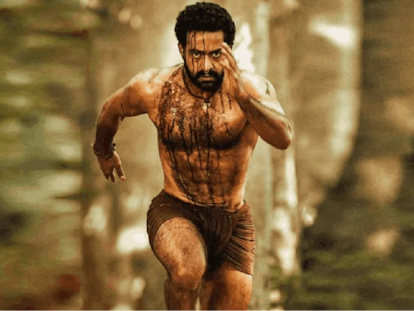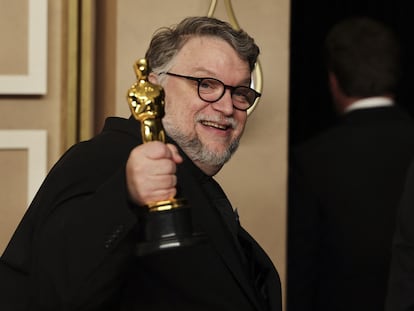‘Naatu Naatu’: The chaotic rhythm of the new Indian nationalism within Telugu cinema, or ‘Tollywood’
The winner of best original song at the Oscars – from the film ‘RRR’ – is the first Indian tune to have ever taken the prize
Naatu Naatu – the winner of best original song at the 2023 Academy Awards, from the film RRR – is the first to win this award for India. The country is the homeland of countless exceptional musicians, such as Ravi Shankar, Ustad Bismillah Khan and Lata Mangeshkar.
But this wasn’t the only award of international renown that the song has received. Since January, it has also triumphed at the Golden Globes and the Critics’ Choice Movie Awards. And, less than a month ago, it was given the Spotlight Award by the Hollywood Critics Association.
Strictly speaking – although it may seem so due to its choreography and overwhelming rhythm – Naatu Naatu is not in the Bollywood theme. Rather than hailing from India’s largest film industry – which is based in Mumbai – it comes out of Tollywood. Based in southern Hyderabad, today, it has taken over as the top segment within the gigantic Indian film industry. While Bombay continues to hold the lead in terms of number of films productions, Tegulu-speaking film productions sold 230 million tickets in 2022.
Of course, despite the Oscar, Naatu Naatu is by no means among the best songs that have been heard in Bollywood films. It is incomparable, for example, with songs as fun and overwhelming as Shava Shava – sung in playback by the great Amitabh Bachchan – or in the songs sung by professionals in the films starring a lip-syncing Shahrukh Khan.
“The choreography of the RRR film sequence is fantastic and the two dancers are exceptional, but the song itself is commercial and nothing special,” says Salomé Masala, who runs a Bollywood school in Madrid.
Tollywood is the name used to identify the films and songs produced in the other two major movie meccas in India: Calcutta and Hyderabad. In the first, the term was coined as a derivation of the Tollygunge neighborhood of the Bengal capital, where the studios were already located in the 1930s, whereas Hyderabad’s Tollywood is a contraction of Hollywood and the Telugu language.
The differences between the songs of the Bollywood cinema and that of Tollywood – located further south – are quite subtle and hardly perceptible to the general public. The ones that appear in the Mumbai-produced films are mostly sung in Hindi and some in Punjabi. You can also occasionally hear some Hinglish – that rather sloppy mix of English and Hindi that’s becoming more popular in the country. However, in the Hyderabad film world, productions almost exclusively use the Telugu language – a language of Dravidian origin, spoken in the states of Andhra Pradesh and Telangana.

But on a more local level, some Indian critics believe that the rhythms of Tollywood songs are faster and the sounds more chaotic, while Bollywood songs, in general, are more melodic. And there’s certainly no doubt that Bollywood songs have an even greater economic impact, since they account for 80% of the musical production in the entire country.
As for the musical scenes from Bollywood and Tollywood musicals, both styles share some general characteristics: exaggerated or extravagant choreography, sweet plots of love and drama, playbacks, idealization of rural and urban India in the midst of landscapes – an India that a large part of the audience would think was actually filmed in the Swiss Alps… or, at least, far from the tremendously polluted and garbage-laden streets of the most populous country on the planet.
These concepts were born during the so-called masala movies that broke into Bollywood in the 1970s. Director Manmohan Desai – considered the father of masala films – wanted, in his own words, “to make people forget their sorrows, transport them to a fantasy world where poverty and orphans didn’t exist… where fate is generous and God has time to take care of his flock.”
The omnipresent dance in the vast majority of Indian films is of religious and ancient origin – like almost all the country’s art – but since the early 1980s, a fusion with Western styles has prevailed. Similarly, the sounds of Bollywood, Tollywood and other film schools have their roots in Indian classical music, romantic gazhals and Muslim poetry in Urdu– the Persian-influenced variety of Hindi.
Since the rise of masala films, the most popular Indian pop has prevailed… although chords of the sitar, harmonium, tabla or the bansuri – the traditional flute – can still sound. Unlike the soundtracks of Western movies, in Bollywood and its cousins, the songs are always integrated into the plot and into the dialogues of the characters.
The music of Indian films also played an important role during the years of the struggle for independence from the British. Most of the films produced in the 1940s contained patriotic messages. The themes – performed by artists such as Ashok Kumar and Renuka Chowdhury in Naya Sansa – or the lyrics of the poet Kavi Pradeep were understood as calls to join the peaceful Quit India protest movement. Parodic for some – or a memory and homage to that independentist nationalism for others – the sequence of Naatu Naatu shows British women captivated by the rhythm of the actors and dancers – Rama Rao and Ram Charam – who leave the British officers in the dust.
However, in today’s India, nationalism has become exacerbated by ultra-Hinduism, which has spread from the government to a large part of the citizenry. It has also permeated music, especially in 2019, following the revocation of the special status of Kashmir by order of Prime Minister Narendra Modi. So-called “pop patriotism” flooded YouTube and social media, with hundreds of songs inciting Hindu nationalists to take the lands of Kashmiri Muslims and marry their wives.
For Marakathamani Keeravani – the composer of Naatu Naatu – the song is about ethnicity.
“It’s a concept that I use to express something from my own culture,” he declared on the night of the Oscars to The New York Times – although for the lyricist, Subash Chandrabose, the song is about what is “rustic” or “raw.” Meanwhile, the Times of India has translated the Telugu theme into Hindi and English as “Dance, Dance!”
Tu suscripción se está usando en otro dispositivo
¿Quieres añadir otro usuario a tu suscripción?
Si continúas leyendo en este dispositivo, no se podrá leer en el otro.
FlechaTu suscripción se está usando en otro dispositivo y solo puedes acceder a EL PAÍS desde un dispositivo a la vez.
Si quieres compartir tu cuenta, cambia tu suscripción a la modalidad Premium, así podrás añadir otro usuario. Cada uno accederá con su propia cuenta de email, lo que os permitirá personalizar vuestra experiencia en EL PAÍS.
¿Tienes una suscripción de empresa? Accede aquí para contratar más cuentas.
En el caso de no saber quién está usando tu cuenta, te recomendamos cambiar tu contraseña aquí.
Si decides continuar compartiendo tu cuenta, este mensaje se mostrará en tu dispositivo y en el de la otra persona que está usando tu cuenta de forma indefinida, afectando a tu experiencia de lectura. Puedes consultar aquí los términos y condiciones de la suscripción digital.
More information
Archived In
Últimas noticias
Most viewed
- Sinaloa Cartel war is taking its toll on Los Chapitos
- Reinhard Genzel, Nobel laureate in physics: ‘One-minute videos will never give you the truth’
- Oona Chaplin: ‘I told James Cameron that I was living in a treehouse and starting a permaculture project with a friend’
- Why the price of coffee has skyrocketed: from Brazilian plantations to specialty coffee houses
- David King, chemist: ‘There are scientists studying how to cool the planet; nobody should stop these experiments from happening’












































